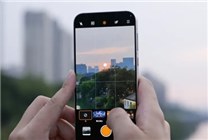### Summary
– New photo analysis apps can reveal your actual photography style, challenging your self-perceptions.
– EXIF data is key to understanding your most used camera settings and focal lengths.
– Evaluating personal photography habits can lead to smarter smartphone purchases tailored to your needs.
—
Tony, a self-proclaimed landscape telephoto enthusiast, recently had his photographic identity questioned after analyzing a report generated by an innovative app called “Slow Point Review.” This app, developed by a popular blogger, analyzes an individual’s photo albums to uncover their true photography style.
Initially, Tony was eager to see if his reputation held up under scrutiny, particularly as he considers upgrading his smartphone in the future. However, he was taken aback when the analysis revealed that he is predominantly a wide-angle storyteller rather than a telephoto master. This revelation intrigued him and prompted further exploration.
The essence of this revelation lies in the EXIF data embedded in photographs. Each image captured by a mobile phone contains EXIF information—a digital snapshot of vital details such as shooting time, focal length, and geographical location. The “Slow Point Review” app scans this EXIF data to analyze focal lengths and exposure settings, providing users with a comprehensive summary of their photography habits.
Upon further introspection, Tony realized that while he enjoys capturing photos through telephoto lenses, his daily shooting activities primarily involve the wide-angle lens. The telephoto lens serves more for creative expression, whereas the wide-angle lens is his go-to for everyday snapshots.
Curious, Tony decided to conduct similar tests among his colleagues, discovering that although many owned smartphones equipped with advanced lenses, their most frequently utilized setting remained in the standard focal range of 35-50mm. This raised an intriguing question: Why do so many people invest in multi-lens smartphones if they primarily rely on the main camera?
The report also highlighted the focal length distribution among various users, revealing that while there are indeed many telephoto enthusiasts, the overwhelming majority use wide-angle lenses. This phenomenon can largely be attributed to the default functionality of smartphone cameras; users instinctively open their cameras and immediately shoot with the wide-angle lens.
Thus, the skewed data is not indicative of a universal preference but rather a habitual response by most smartphone users. For instance, Tony’s co-worker nearly opted for a basic mobile device, unaware of their personal photography habits reflected in the report.
Interestingly, the telephoto lens significantly enhances image quality and spatial compression in photography. However, the data showed that several colleagues seldom used the telephoto option, with medium telephoto shots comprising less than 10% of their albums. This disparity led Tony to reassess whether investing in advanced telephoto capabilities was justified, given its infrequent use.
Consider this: when purchasing a new phone, many consumers remain fixated on the capabilities of multiple lenses without reflecting on their actual photography habits. Often, these additional features end up unused, gathering dust while the primary lens remains the real workhorse.
The insight provided by this report offers a unique opportunity for consumers to step back and evaluate their photographic practices objectively. It encourages introspection about individual needs and promotes making informed decisions when it comes to smartphone purchases.
As smartphone manufacturers continue to innovate without clear direction, exploring personal photography habits could well be the safest bet. Nevertheless, it’s vital to assess whether the marketing claims align with one’s actual usage patterns.
Just as many brands are delving into cutting-edge ultra-telephoto solutions, consumers must also question whether they should follow trends blindly. Before committing to a new phone, take a moment to evaluate your past photography styles and interests. Are the features advertised genuinely aligned with your most frequent focal lengths? Are you prepared to allocate a higher budget for capabilities you seldom use?
In conclusion, the best smartphone for you is one that meets your specific needs rather than simply following industry trends.





